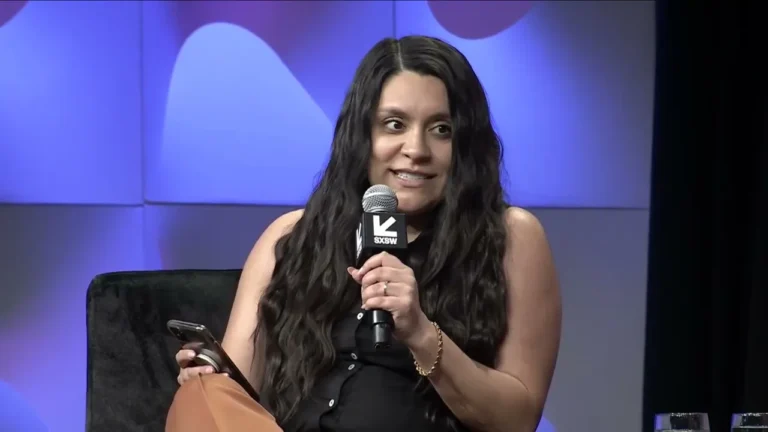Behavioral Psychology for Evil: Let’s Go Whaling!
I’m interested in learning the tactics freemium game developers use to hook people into spending too much money…so that I can use those same tactics to gamify Moodle and hook students into learning.
Video
AI-Generated Podcast
SUMMARY
- Riku Seppälä’s PGDC talk on game monetization techniques.
- Explores behavioral psychology tricks to increase spending.
- Focuses on whales and in-game economy to maximize revenue.
IDEAS
- Many high-spending players in games are competitive.
- Large in-game economies improve retention and monetization.
- Model game sales based on player types.
- Focus on selling convenience and progress.
- Pay-to-win can be good but needs balance.
- Selling content is expensive and hard to keep up with.
- Use the hook, habit, hobby model for player progression.
- Offer a no-brainer deal upfront to increase commitment.
- Break the “I’ll never pay” wall with an initial purchase.
- Gacha mechanics are like collectible card games.
- Gacha mechanics leverage the lottery effect.
- Decide on your target audience: high volume or high spenders.
- Use hot state (fast thinking) for spending decisions.
- Make purchases immediately useful and gratifying.
- Leverage loss aversion by threatening to take away items.
- Use scarcity and limited-time offers to drive spending.
- Subscriptions can drive retention and monetization.
- The IKEA effect makes players value items they work for.
- Use the Hooked model to build habits in players.
- Anchoring can influence players’ perception of value.
- Social proof encourages spending as the norm.
- Make spending the socially acceptable behavior.
- Availability bias can be used to make rare items seem more attainable.
- Offer the right amount of choice to avoid decision paralysis.
- Whales take longer to convert, so have long-term content.
- Integrate the store into the core game loop.
- Use labeling to influence player behavior.
- Give players reasons to spend, even if they’re not great.
- Make sure grinding and paying are both viable progression methods.
- Reciprocity is a strong mechanic but hard to implement in games.
INSIGHTS
- Understanding player psychology is crucial for effective monetization.
- In-game economies are powerful tools for driving engagement and revenue.
- Different player types respond to different monetization strategies.
- Creating a sense of urgency and scarcity can encourage spending.
- Building habits and emotional investment increases player lifetime value.
- Social dynamics and peer influence can significantly impact spending.
- Offering a clear and compelling value proposition is essential.
- Balancing skill, luck, grinding, and paying is key for a successful game.
QUOTES
- “The very best way to get these guys to spend is to get two rich, competitive guys to fight each other.”
- “Top grossing games have in-game economies worth tens of thousands.”
- “Most of your sales will be here.”
- “Selling content is very expensive.”
- “You want to give a really, really good deal, something that’s a no-brainer.”
- “Lots of people otherwise have this wall up, I will never pay for a mobile game. So you need to break the wall first.”
- “It’s really a lot more exciting and you get more content because people cannot immediately progress to the stuff they want.”
- “Just know where you stand on this.”
- “The slow thinking is your analytical brain.”
- “Make it immediately useful.”
- “We need more gain to offset the loss is felt more strongly.”
- “They are scarce, they go away, this is a brilliant way to get more.”
- “Build stuff that makes people come back to your game a lot in order to get the value out of that.”
- “You absolutely do not want to tell them that the majority of people in your game never spend money.”
- “The right amount of choice.”
- “Whales take longer time to convert.”
- “Spend because reasons.”
- “Reciprocity is a very, very strong mechanic.”
HABITS
- Studying behavioral psychology.
- Analyzing successful game economies.
- Understanding different player motivations.
- Experimenting with different monetization strategies.
- Continuously iterating and improving game design.
FACTS
- High-spending players (whales) drive a significant portion of game revenue.
- In-game economies can be worth tens of thousands of dollars.
- The first purchase in a game can significantly increase player retention.
- Gacha mechanics are based on the same principles as collectible card games.
- Loss aversion is a powerful psychological principle that can be used in game design.
- The IKEA effect demonstrates that people value things they put effort into more highly.
- Anchoring can influence people’s perception of value.
- Social proof can make spending seem like the norm.
- Offering too much choice can lead to decision paralysis.
- Whales often take longer to convert into paying players.
- Reciprocity requires a gift to be unexpected, personal, and significant.
REFERENCES
- Will Luton’s Bottle Types model for player motivations.
- Dimitri Dravano’s Hook, Habit, Hobby model for player progression.
- Thinking Fast and Slow by Daniel Kahneman.
- Skinner Box.
- Hooked by Nir Eyal.
- Black Pearls example of anchoring.
- Jam experiment on choice overload.
- Hill Climb Racing as an example of core loop integration.
- Labeling technique from social psychology.
ONE-SENTENCE TAKEAWAY
- Understand player psychology and design smart monetization strategies that drive engagement and revenue.
RECOMMENDATIONS
- Offer a no-brainer deal upfront to encourage initial spending.
- Design a large and engaging in-game economy.
- Cater to different player types with various monetization strategies.
- Leverage loss aversion and scarcity to drive purchases.
- Use the Hooked model to build player habits.
- Implement anchoring techniques to influence perceived value.
- Make spending the socially acceptable behavior through social proof.
- Offer the right amount of choice to avoid overwhelming players.
- Design long-term content to cater to whales.
- Integrate the store into the core game loop.
- Use labeling to positively influence player behavior.
- Provide clear reasons for spending.
- Ensure grinding and paying are both viable progression paths.
- Explore ways to incentivize reciprocity between players.
AGENT TEAM SUMMARIES
- SUMMARY: Agent team summarized the presentation as a guide to game monetization using psychology.
- IDEAS: The agent team extracted key ideas related to player psychology, monetization techniques, and game design.
- INSIGHTS: The agent team synthesized core insights on player motivation, engagement, and revenue generation.
- QUOTES: The agent team selected impactful quotes highlighting key monetization principles and strategies.
- HABITS: The agent team identified habits of successful game developers related to psychology and analysis.
- FACTS: The agent team extracted factual statements about player behavior and game monetization.
- REFERENCES: The agent team collected references to models, books, and games mentioned in the presentation.
- ONE-SENTENCE TAKEAWAY: The agent team captured the essence of the presentation in a concise takeaway.
- RECOMMENDATIONS: The agent team formulated actionable recommendations for game developers based on the content.




